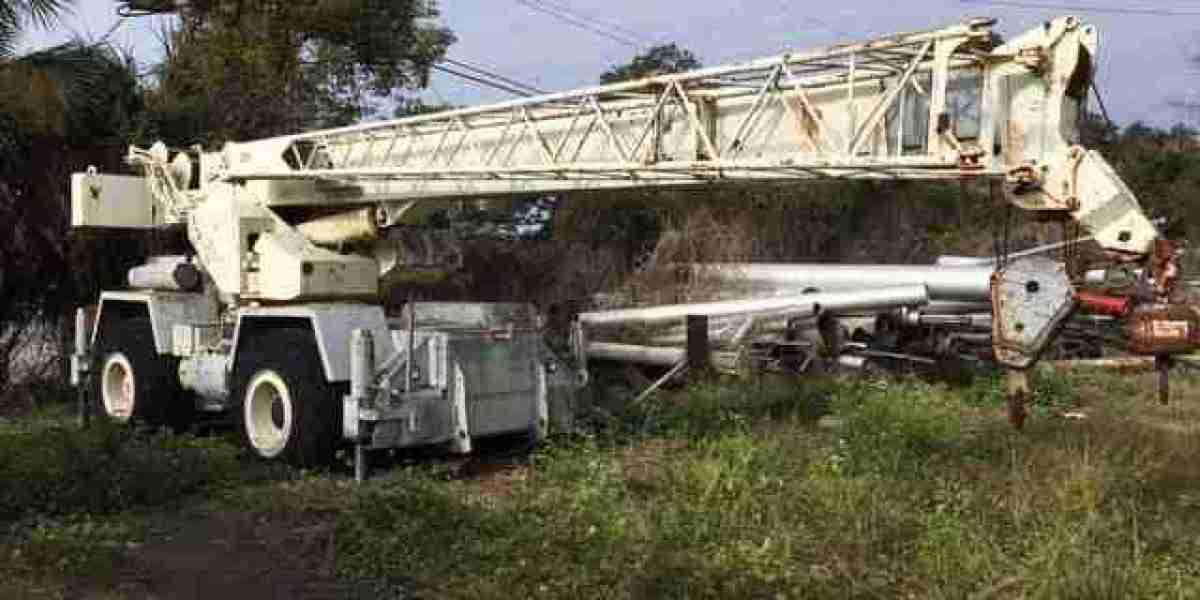The rough terrain crane market potential is increasingly being defined by the growing global emphasis on sustainability and the adoption of low-emission equipment. As industries worldwide transition towards greener operations, heavy machinery like rough terrain cranes are undergoing a transformation in both design and deployment. Traditionally valued for their ability to operate in off-road and harsh conditions, rough terrain cranes are now also expected to meet stringent environmental standards without compromising performance.
With construction, energy, mining, and infrastructure sectors facing pressure to reduce carbon footprints, equipment manufacturers and end-users alike are investing in eco-friendly solutions. The growing demand for sustainable practices is reshaping market dynamics and unlocking new opportunities for innovation, partnerships, and market expansion.
Sustainability as a Key Market Driver
Environmental sustainability has moved to the forefront of industry priorities across the globe. Governments are implementing policies aimed at reducing greenhouse gas emissions, while corporations are adopting Environmental, Social, and Governance (ESG) frameworks to meet regulatory requirements and stakeholder expectations.
This shift is directly influencing the rough terrain crane market. Construction firms and infrastructure developers, particularly those working on publicly funded or large-scale international projects, are increasingly mandated to use low-emission machinery. As a result, cranes powered by hybrid or electric engines are gaining attention.
In Europe, for instance, emissions regulations like the EU Stage V standards are pushing manufacturers to develop cleaner engines. In the United States, EPA Tier 4 standards serve a similar purpose. Meanwhile, emerging economies are beginning to adopt comparable guidelines, creating a global ripple effect that broadens the market for sustainable crane models.
Low-Emission Equipment Adoption
Low-emission rough terrain cranes are becoming a critical component of sustainable construction and industrial practices. These machines are equipped with advanced engine technologies, exhaust treatment systems, and fuel-efficient designs to minimize environmental impact.
1. Hybrid and Electric Models: Manufacturers such as Tadano, Liebherr, and Manitowoc are leading the charge by introducing hybrid and electric-powered cranes. These models utilize battery-electric systems or hybrid diesel-electric configurations that reduce fuel consumption and greenhouse gas emissions while maintaining high lifting capacities.
2. Telematics and Smart Controls: Modern rough terrain cranes are increasingly equipped with smart control systems that enhance energy efficiency. Telematics solutions provide real-time data on fuel usage, idle time, and maintenance needs—allowing operators to optimize performance and minimize environmental impact.
3. Eco Mode Operations: Some cranes now offer 'Eco Mode' features that automatically adjust engine RPMs based on load requirements. This functionality helps reduce unnecessary fuel burn and extends engine life, aligning with sustainability goals while lowering operational costs.
4. Retrofitting and Upgrades: There is a growing market for retrofitting older crane models with cleaner engine technology or emission control systems. This provides an economical way for companies to comply with environmental regulations without completely overhauling their fleets.
Market Opportunities and Growth Potential
The increasing adoption of low-emission equipment opens several avenues for market growth:
1. Public Infrastructure Projects: Governments are emphasizing sustainability in public procurement processes. Projects that utilize low-emission construction equipment often receive preferential treatment, funding, or fast-tracked approvals. This presents a significant opportunity for manufacturers of eco-friendly rough terrain cranes.
2. Green Building Initiatives: As cities invest in green buildings and sustainable urban infrastructure, demand for low-emission machinery will continue to rise. Rough terrain cranes that can operate efficiently within low-impact construction zones will be in high demand.
3. Renewable Energy Sector: The renewable energy industry, particularly wind and solar power projects, requires heavy lifting equipment in remote locations. These projects often prioritize sustainability, creating a strong demand for hybrid and electric cranes.
4. Equipment Rental Market: Rental companies are expanding their fleets with environmentally friendly options to meet the demands of eco-conscious contractors. As a result, the rental segment is becoming a major driver of sustainable crane adoption.
5. Emerging Economies: Developing countries are increasingly embracing sustainable development. As infrastructure projects ramp up, there is a growing opportunity to introduce low-emission cranes as part of environmentally responsible construction practices.
Challenges and Considerations
Despite the clear benefits and growing demand, several challenges remain in scaling low-emission equipment adoption:
1. High Initial Costs: Hybrid and electric rough terrain cranes often come with higher upfront costs compared to traditional models. This can be a barrier for smaller contractors or projects with tight budgets.
2. Charging and Fueling Infrastructure: The lack of adequate charging stations or support infrastructure in remote areas can hinder the deployment of electric cranes. Investment in supporting infrastructure is essential to maximize potential.
3. Technological Readiness: While hybrid models are relatively mature, fully electric rough terrain cranes are still in the early stages of development and deployment. Further R&D and field testing are necessary to enhance their reliability and scalability.
4. Market Awareness and Training: End-users need better awareness of the operational benefits and cost savings associated with sustainable cranes. Training programs and incentives can help accelerate adoption.
Competitive Landscape and Innovation
Key players in the rough terrain crane market are prioritizing R&D to align with sustainability trends. Companies such as Zoomlion, Sany Group, and XCMG are developing energy-efficient models tailored for both global and regional markets.
Strategic partnerships with clean energy firms, construction companies, and governments are also becoming common. These collaborations are helping to fund innovation, pilot new models, and drive regulatory acceptance.
Innovative business models, such as equipment-as-a-service (EaaS), are gaining popularity. By offering cranes on a subscription basis with full maintenance and support, these models make advanced sustainable technology more accessible to a wider user base.
Conclusion
The rough terrain crane market potential is closely tied to the global push for sustainability and the adoption of low-emission equipment. As environmental standards become stricter and ESG considerations influence buying decisions, rough terrain cranes must evolve to meet these new expectations. Through continued innovation, infrastructure investment, and stakeholder collaboration, the market is poised to grow in a more sustainable and responsible direction. For manufacturers, rental companies, and end-users, embracing this shift is not only a necessity but a pathway to long-term competitiveness and environmental stewardship.




